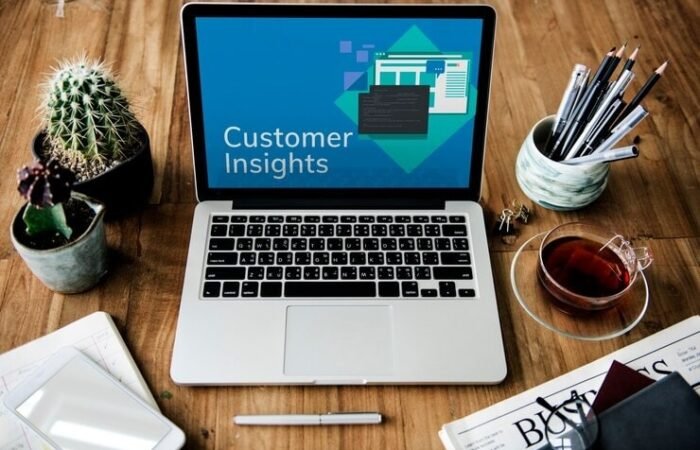In today’s fiercely competitive business landscape, acquiring new customers is only half the battle. The real challenge lies in retaining those hard-won customers and fostering lasting relationships that drive long-term growth and profitability.
By prioritizing customer satisfaction, leveraging customer feedback, and optimizing marketing approaches, businesses can implement effective customer retention strategies that nurture loyalty, boost retention rates, and unlock sustainable success.
Key Takeaways
- Customer retention is crucial for maintaining a steady stream of revenue and reducing acquisition costs.
- Understanding customer needs and expectations is the foundation for building effective retention strategies.
- Prioritizing customer satisfaction through effective communication, timely issue resolution, and personalized experiences can significantly improve retention rates.
- Collecting and acting on customer feedback is essential for identifying areas for improvement and driving customer-centric changes.
- Optimizing marketing approaches with targeted advertising, personalized content, and loyalty programs can enhance customer engagement and loyalty.
- Measuring and analyzing retention metrics, such as cohort analysis and customer engagement scores, provides valuable insights for refining retention efforts.
Now, let’s dive into the details of each section, following the outlines and incorporating the suggested styles and formatting.
Customer Retention
You know the saying, “It’s easier to keep an existing customer than to acquire a new one”? Well, that’s the essence of customer retention. It’s all about nurturing the relationships you’ve already built and keeping your customers coming back for more.
Definition and Importance: Customer retention refers to a business’s ability to keep its existing customers engaged, satisfied, and loyal over time. In other words, it’s about preventing customer churn and ensuring that your hard-earned customers stick around for the long haul.
Why does it matter? Simple – retaining customers is way more cost-effective than constantly seeking out new ones. In fact, studies have shown that it can cost up to 5 times more to acquire a new customer than to retain an existing one. Plus, loyal customers tend to spend more, refer others, and provide valuable feedback to help you improve your offerings.
Overview of Challenges: Of course, retaining customers isn’t always a walk in the park. You’re up against fierce competition, evolving customer expectations, and the ever-present risk of customers jumping ship for greener pastures. But fear not, my friend! With the right strategies in place, you can overcome these challenges and forge lasting bonds with your customer base.
Understanding Customer Needs and Expectations
Before you can even think about retaining customers, you need to understand what makes them tick. It’s like trying to bake a cake without knowing the ingredients – you’re just setting yourself up for a messy disaster.
Identifying Customer Segments: Not all customers are created equal. They come from different backgrounds, have varying motivations, and prioritize different things. That’s why it’s crucial to segment your customer base and tailor your approach accordingly.
For example, millennials might value convenience and tech-savvy solutions, while baby boomers might prioritize personalized service and human interaction. By understanding these nuances, you can create targeted strategies that resonate with each segment.
The Role of Customer Feedback: Let’s be real – you can’t read minds (at least, not yet!). The best way to truly understand your customers’ needs and expectations is to ask them directly. Encourage feedback through surveys, social media, and good old-fashioned conversations.
This feedback is like a golden treasure trove, revealing insights into what your customers love, what they hate, and what improvements they’d like to see. Use this invaluable input to shape your retention strategies and continually evolve with your customers’ changing needs.
Prioritizing Customer Satisfaction
Satisfied customers are like loyal soldiers – they’ll stick by your side through thick and thin. But achieving and maintaining that satisfaction? Well, that’s where the real work comes in.
The Impact of Satisfaction: Customer satisfaction is the ultimate make-or-break factor when it comes to retention. Highly satisfied customers are more likely to remain loyal, recommend your products or services to others, and even forgive the occasional misstep.
On the flip side, dissatisfied customers are like ticking time bombs, just waiting to detonate and take their business elsewhere. It’s a harsh reality, but one that underscores the importance of prioritizing satisfaction in your retention efforts.
Strategies for Ensuring Satisfaction:
- Effective Communication: Clear, consistent, and transparent communication is the backbone of customer satisfaction. Keep your customers in the loop, respond promptly to inquiries, and ensure that they always know what to expect from your business.
- Timely Issue Resolution: Let’s face it, hiccups happen. But how you handle those issues can make or break customer satisfaction. Implement robust support systems that allow for swift and effective problem-solving, demonstrating your commitment to making things right.
- Personalized Experiences: In today’s world, customers crave personalization. Tailor your products, services, and interactions to suit individual preferences and needs. Whether it’s personalized recommendations, customized packaging, or simply addressing customers by name, these small touches can go a long way in fostering satisfaction and loyalty.
Leveraging Customer Feedback
Remember that golden treasure trove of customer feedback we talked about earlier? Well, it’s time to put it to use!
The Importance of Feedback: Customer feedback isn’t just a nice-to-have; it’s an essential ingredient for successful retention strategies. By actively listening to your customers’ voices, you gain invaluable insights into what’s working, what’s not, and where improvements are needed.
Ignoring feedback is like plugging your ears and shouting “la la la” – it might make you feel better in the moment, but it won’t do you any favors in the long run.
Methods for Collecting Feedback:
- Surveys: Online surveys are a classic method for gathering feedback, allowing you to reach a wide audience and collect both quantitative and qualitative data.
- Social Media Monitoring: Keep a close eye on what customers are saying about your brand across social media platforms. Respond to both positive and negative feedback, and use these insights to inform your strategies.
- Customer Support Interactions: Every interaction with your customer support team is an opportunity to gather feedback. Train your representatives to actively listen and document customer concerns, praises, and suggestions.
Implementing Feedback-Driven Changes: Collecting feedback is only half the battle. The real magic happens when you put that feedback into action. Analyze the data, identify trends and recurring themes, and use those insights to drive meaningful changes in your products, services, and customer experiences.
Perhaps you’ll discover a need for more comprehensive FAQs or tutorial videos. Or maybe your customers are clamoring for a revamped loyalty program. Whatever the feedback reveals, be willing to adapt and evolve based on your customers’ voices.
Optimizing Marketing Approaches
Marketing isn’t just about attracting new customers; it’s also a powerful tool for retaining your existing customer base. By optimizing your marketing efforts, you can keep your brand top-of-mind, foster engagement, and ultimately, drive loyalty.
The Role of Marketing: Think of marketing as the glue that holds your retention efforts together. It’s the means by which you communicate with your customers, remind them of your value proposition, and entice them to keep coming back for more.
Effective marketing can reinforce brand loyalty, promote new offerings, and even re-engage customers who may have strayed from your brand.
Strategies for Optimizing Marketing Efforts:
- Targeted Advertising: With the wealth of data at your fingertips, there’s no excuse for generic, one-size-fits-all advertising. Leverage customer insights to create targeted campaigns that speak directly to specific segments, interests, and behaviors.For example, you might run a retargeting campaign for customers who abandoned their online shopping carts, or promote a new loyalty program to your most frequent buyers.
- Personalized Content: Gone are the days of generic newsletters and mass email blasts. Today’s customers expect personalized, relevant content that caters to their unique interests and preferences.Leverage customer data to create tailored content experiences, whether it’s personalized product recommendations, customized email campaigns, or dynamic website content that adjusts based on user behavior.
- Loyalty Programs: Who doesn’t love feeling appreciated? Loyalty programs are a tried-and-true method for incentivizing repeat business and fostering a sense of exclusivity among your customer base.Whether it’s a points-based system, tiered rewards, or exclusive perks and experiences, a well-designed loyalty program can be a powerful retention tool, encouraging customers to stick with your brand for the long haul.
Building Customer Loyalty
Loyalty is the holy grail of customer retention. When customers are truly loyal to your brand, they become advocates, evangelists, and walking billboards for your business.
The Importance of Loyalty: Loyal customers are worth their weight in gold. Not only are they more likely to stick around and continue doing business with you, but they also tend to spend more, provide valuable referrals, and act as brand ambassadors, singing your praises to anyone who will listen.
Cultivating a loyal customer base is like having a secret weapon in your arsenal – it provides a competitive edge, a steady stream of revenue, and a foundation for long-term growth and success.
Strategies for Building Loyalty:
- Reward Programs: Everybody loves feeling appreciated, and what better way to show your gratitude than by rewarding your most loyal customers? Implement a well-designed reward program that incentivizes repeat business and fosters a sense of exclusivity.This could be a points-based system, tiered rewards, or exclusive perks and experiences reserved only for your VIP customers. Not only do these programs encourage loyalty, but they also create a sense of community and belonging among your customer base.
- Exclusive Offers: Who doesn’t love feeling like they’re part of an exclusive club? Offer your loyal customers special deals, discounts, or early access to new products or services that aren’t available to the general public.This not only reinforces their sense of value but also creates a fear of missing out, further cementing their loyalty to your brand.
- Community Engagement: In today’s digital age, fostering a sense of community is more important than ever. Encourage your loyal customers to connect with one another, share their experiences, and engage with your brand on a deeper level.This could be through online forums, social media groups, or even in-person events and meetups. By creating a thriving community, you not only strengthen the bond between your customers and your brand but also foster a sense of loyalty that extends beyond the transactional.
Remember, building loyalty is a marathon, not a sprint. It requires consistent effort, a deep understanding of your customers, and a genuine commitment to delivering exceptional experiences time and time again.
Measuring and Analyzing Retention
As the old adage goes, “What gets measured, gets managed.” In the world of customer retention, this rings particularly true. Without a clear understanding of your retention metrics, it’s impossible to gauge the effectiveness of your strategies and make data-driven decisions.
The Importance of Tracking Metrics: Measuring retention metrics isn’t just a nice-to-have; it’s an essential component of any successful retention program. By tracking key indicators like customer churn rate, repeat purchase rate, and customer lifetime value, you gain valuable insights into the health of your customer relationships and the impact of your retention efforts.
Failing to measure these metrics is like driving with a blindfold on – you might be moving, but you have no idea where you’re headed or how to course-correct if necessary.
Strategies for Analyzing Retention Data:
- Cohort Analysis: Cohort analysis is a powerful tool for understanding customer behavior and retention patterns. By grouping customers based on shared characteristics (e.g., acquisition date, location, or demographic) and tracking their behavior over time, you can identify trends, pinpoint potential pain points, and optimize your retention strategies accordingly.
For example, you might discover that customers acquired through a specific marketing channel have a higher churn rate after six months, prompting you to reevaluate your onboarding process or targeted messaging for that cohort.
- Funnel Analysis: Just as you analyze funnels for customer acquisition, it’s equally important to examine the customer retention funnel. By breaking down the journey into key stages (e.g., initial purchase, repeat purchase, loyalty program enrollment), you can identify areas of high drop-off and implement targeted strategies to improve retention at each stage.
- Customer Engagement Scores: Engaged customers are typically more loyal and less likely to churn. By assigning engagement scores based on factors like website visits, email opens, social media interactions, and support inquiries, you can identify customers at risk of churning and take proactive measures to re-engage them.
Leveraging tools like customer relationship management (CRM) software can streamline the process of tracking engagement scores and ensuring that no customer falls through the cracks.
Remember, measuring and analyzing retention data isn’t a one-and-done exercise; it’s an ongoing process that should inform and shape your retention strategies continuously. Regularly review your metrics, identify areas for improvement, and iterate on your approach for maximum impact.
Conclusion: Best Practices for Customer Retention
Phew, we’ve covered a lot of ground, haven’t we? From understanding customer needs and prioritizing satisfaction to leveraging feedback, optimizing marketing, building loyalty, and measuring retention – it’s clear that effective customer retention requires a multifaceted approach.
Final Thoughts: In today’s fiercely competitive landscape, customer retention is no longer a nice-to-have – it’s a necessity for long-term growth and profitability. By implementing the best practices outlined in this article, you can forge unbreakable bonds with your customers, cultivate a loyal following, and position your business for sustainable success.
Remember, customer retention is an ongoing journey, not a destination. Embrace a customer-centric mindset, remain agile and adaptable, and never stop seeking ways to improve the customer experience. With dedication and a commitment to excellence, you can turn your customers into lifelong brand advocates and pave the way for enduring business success.








No Comment! Be the first one.